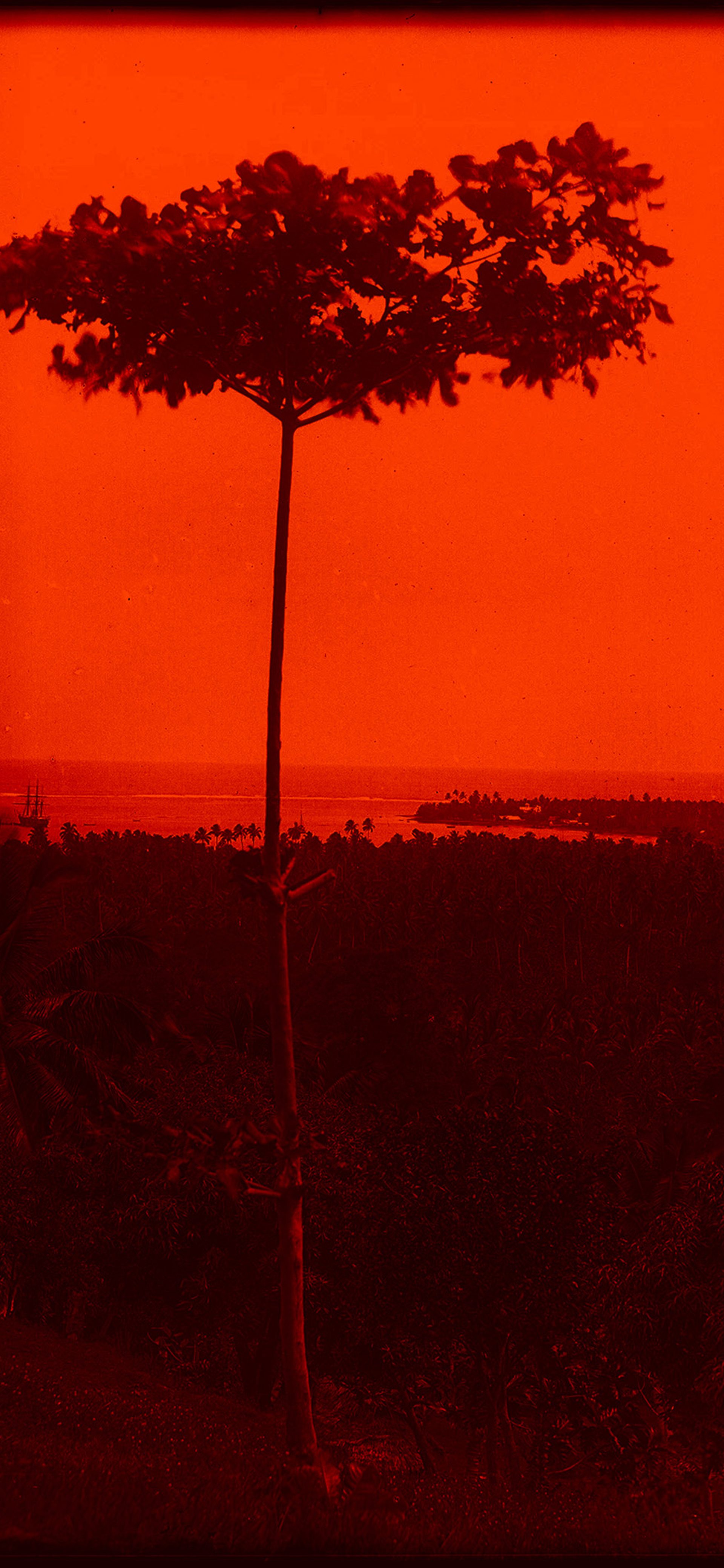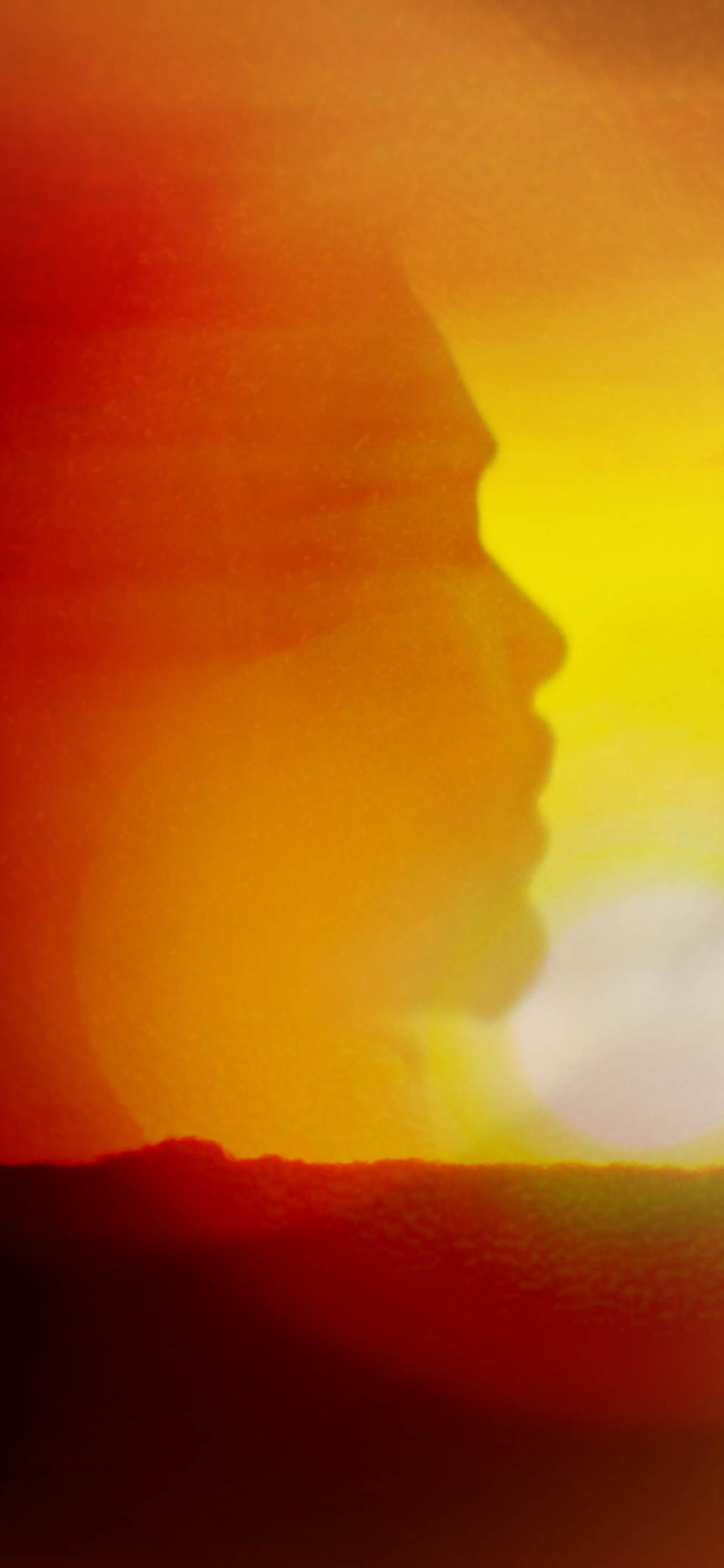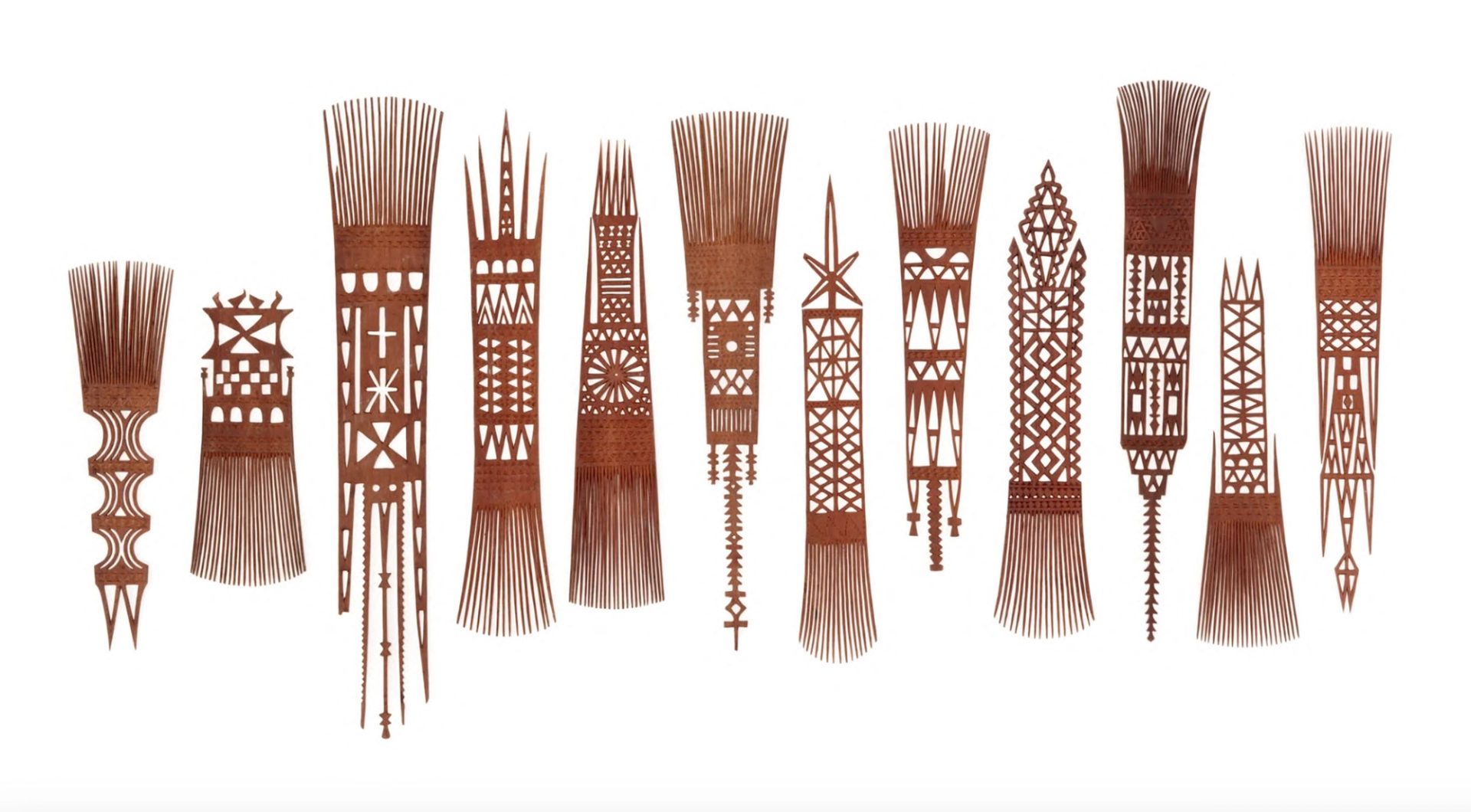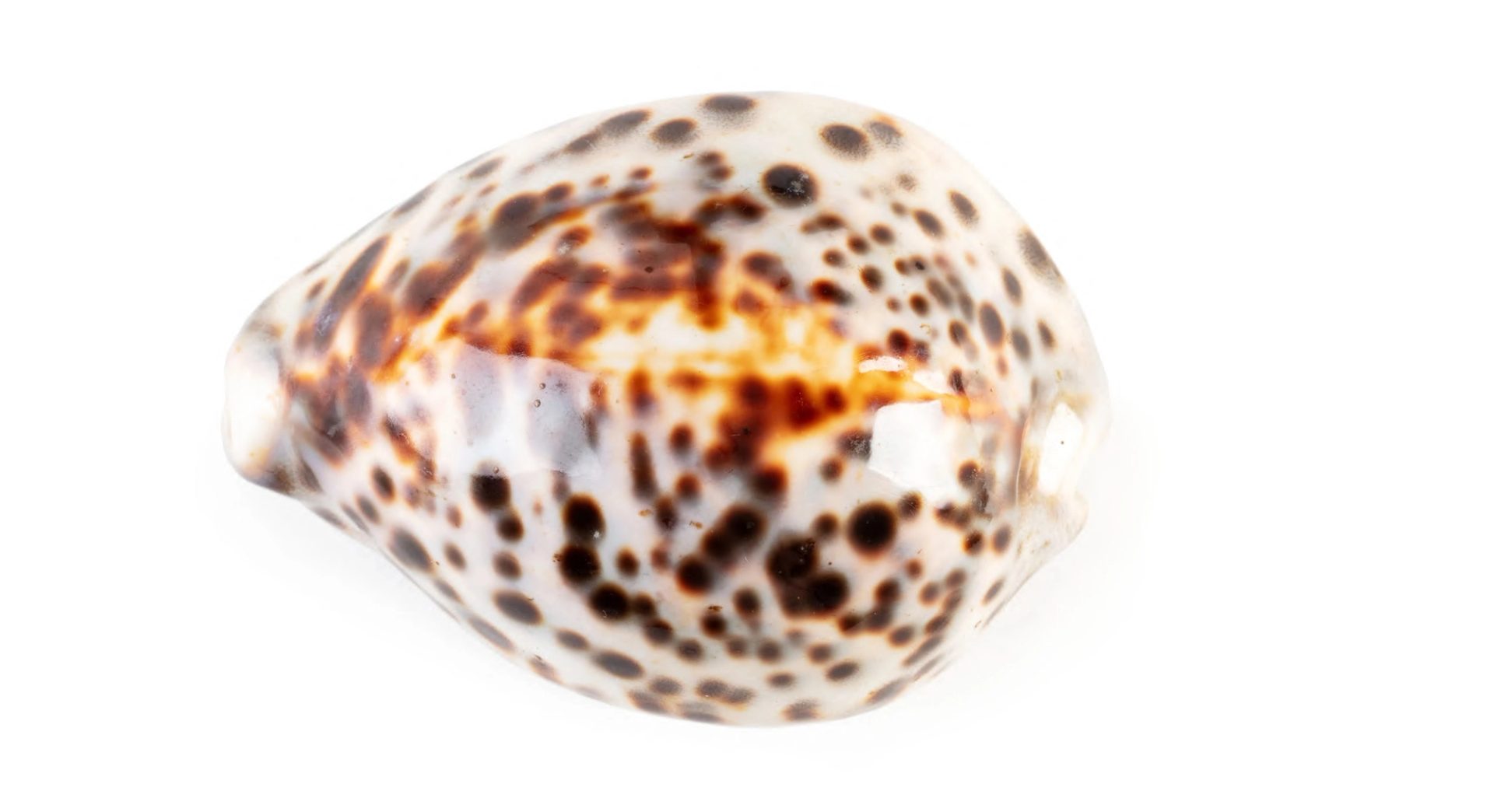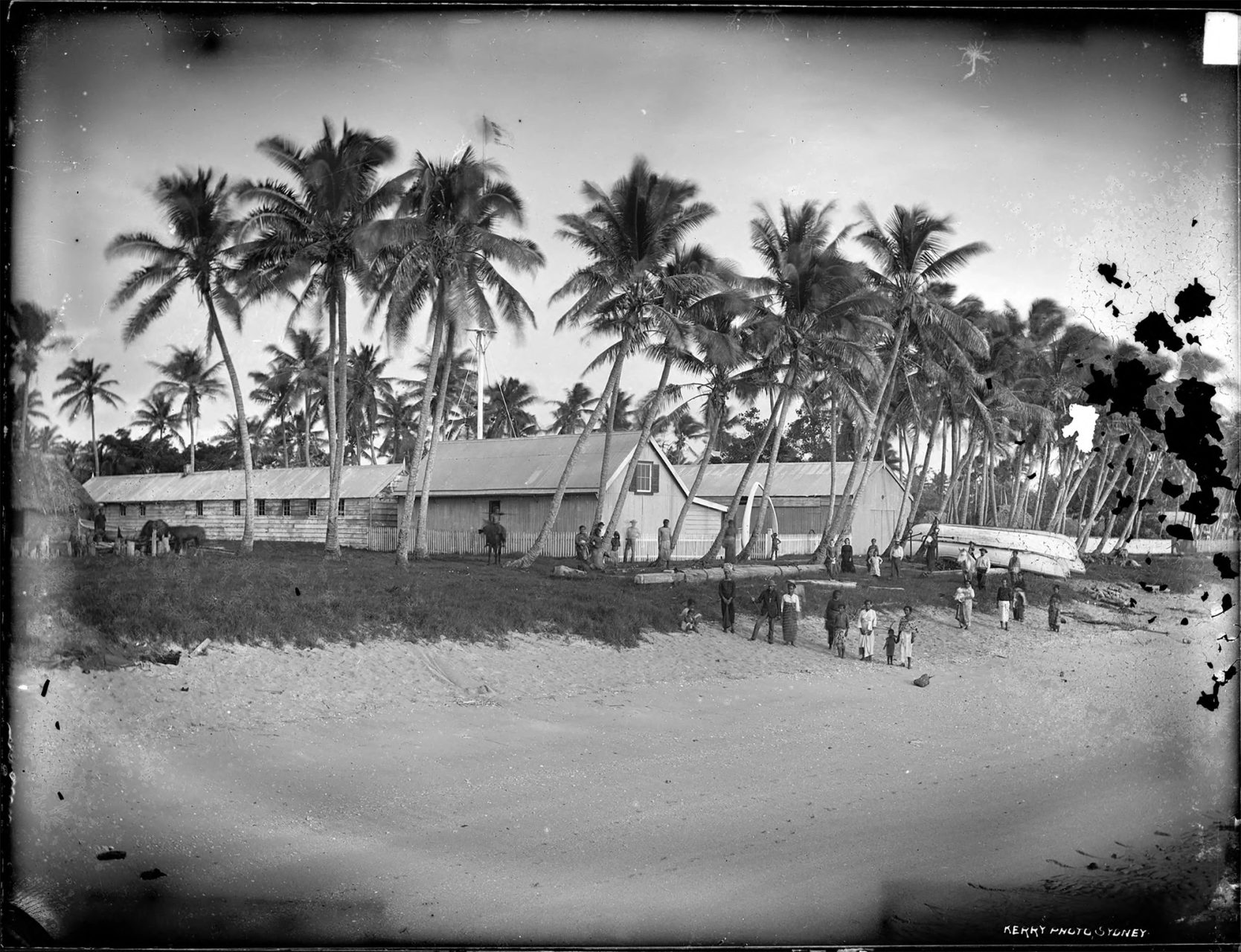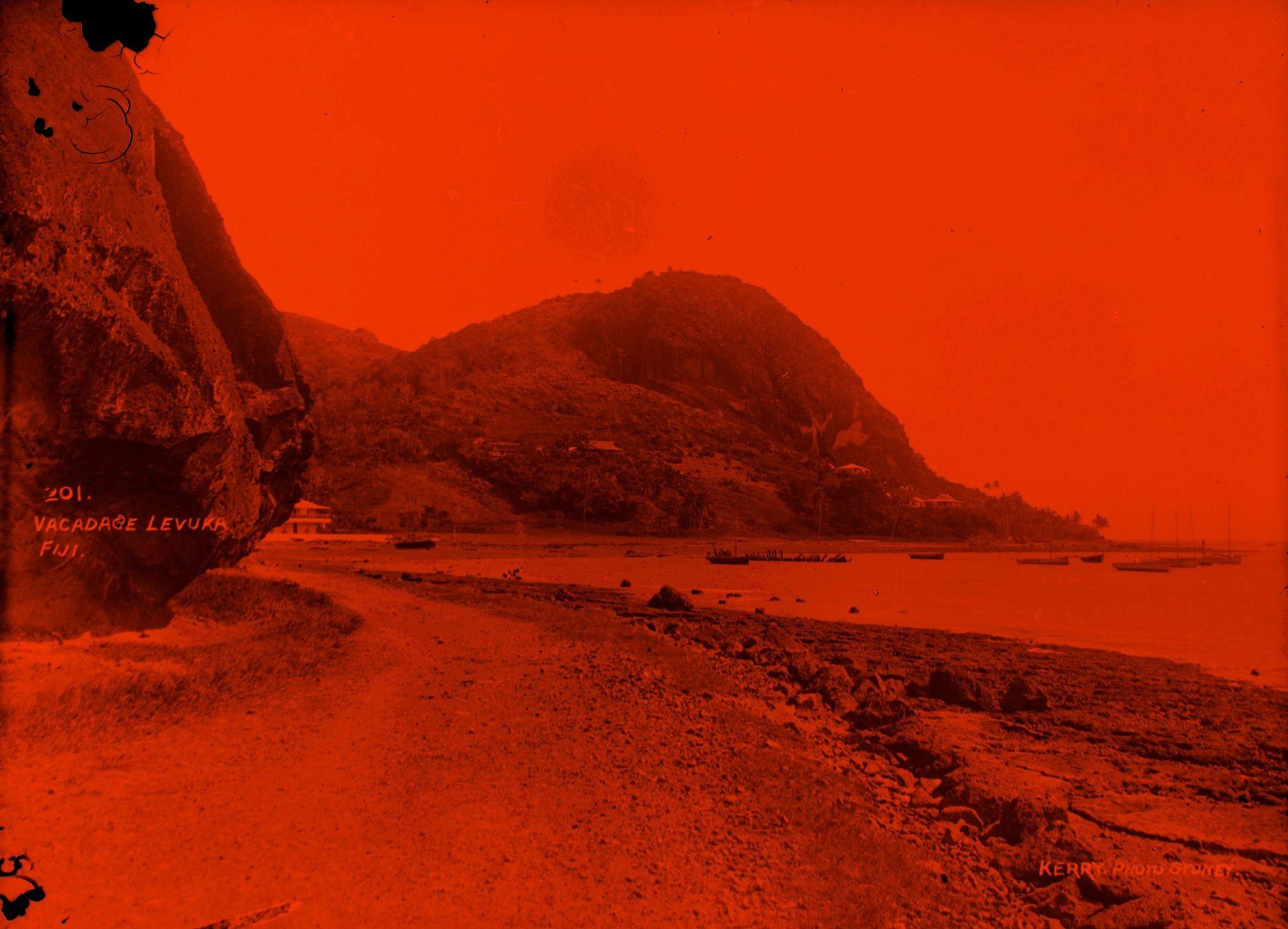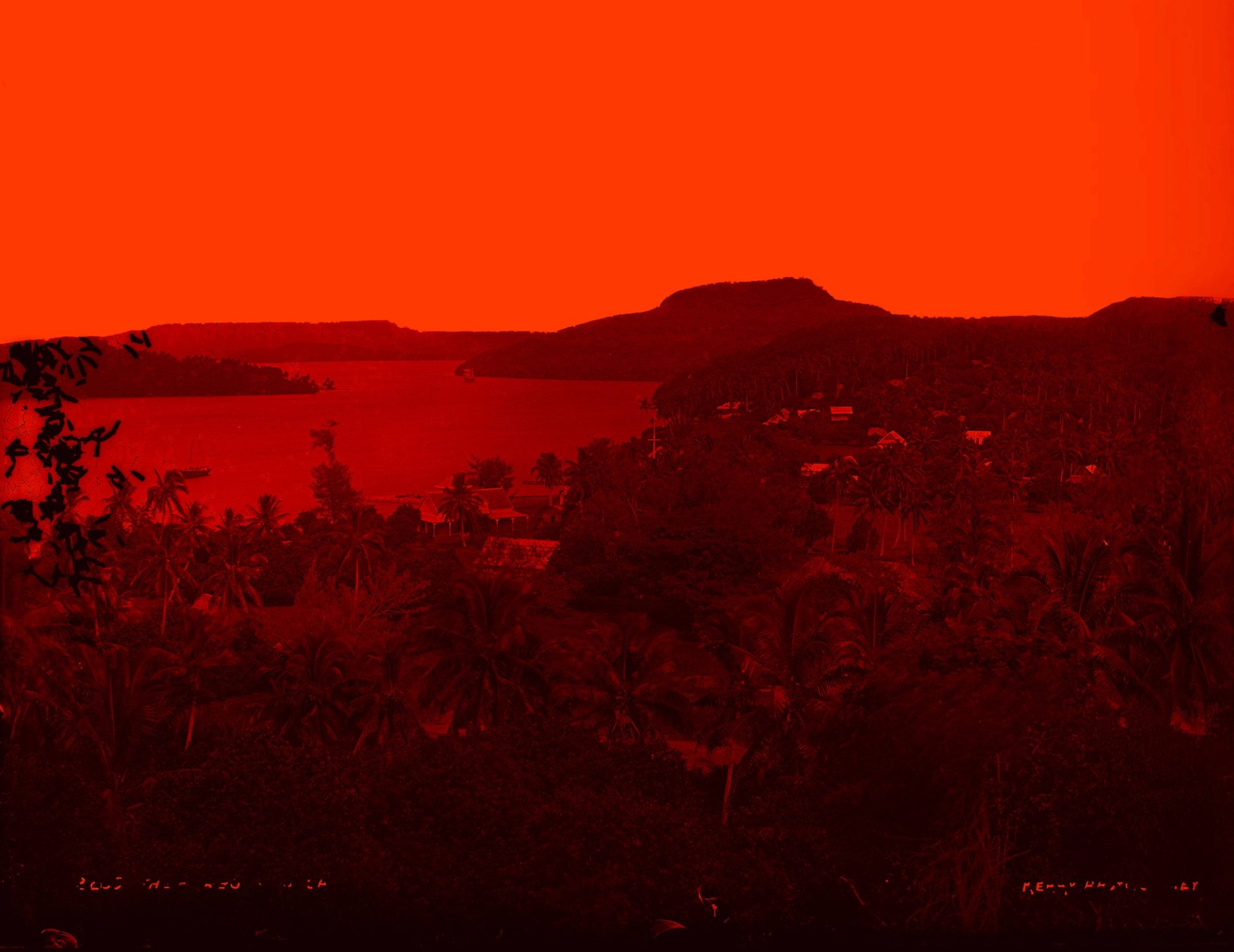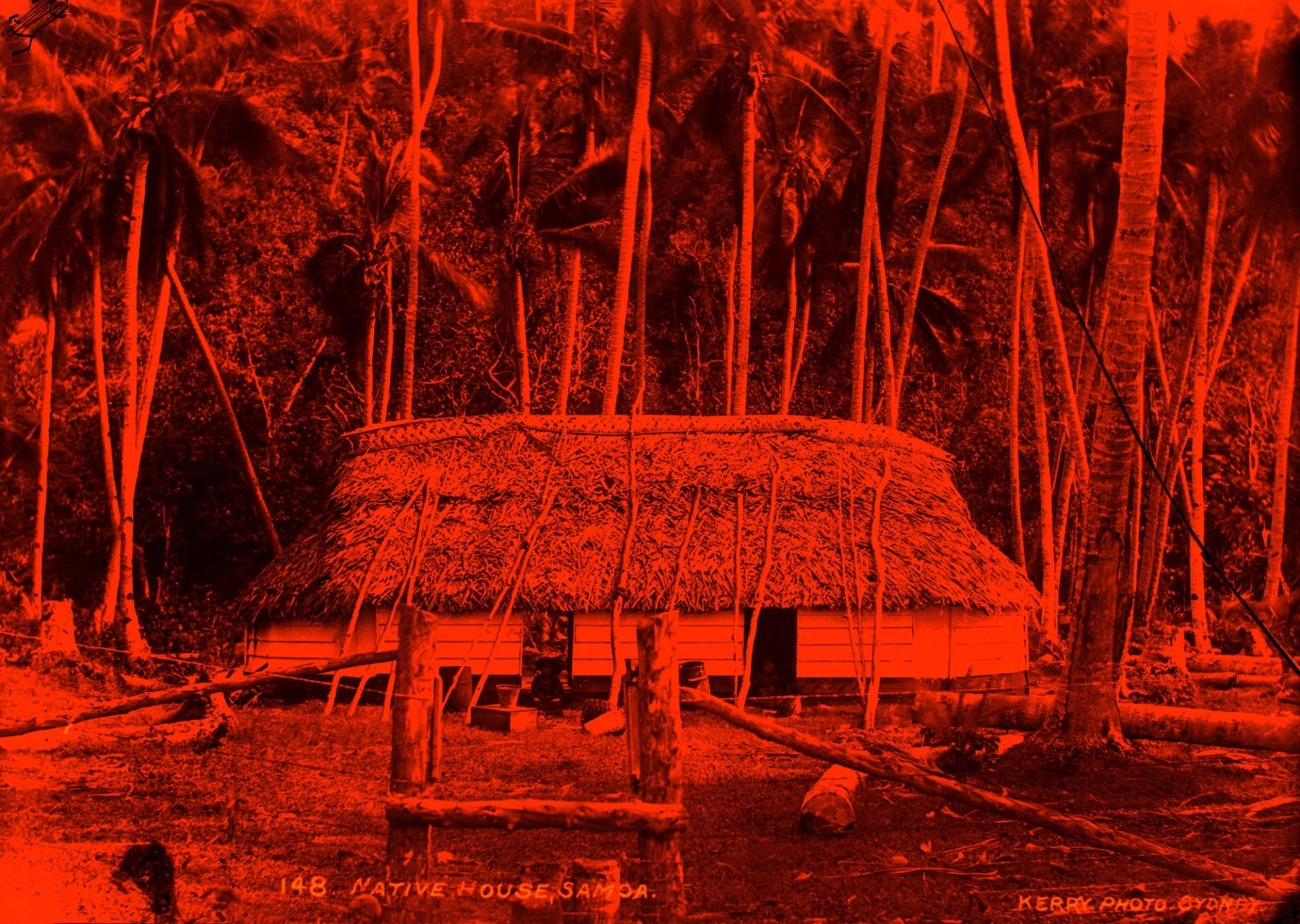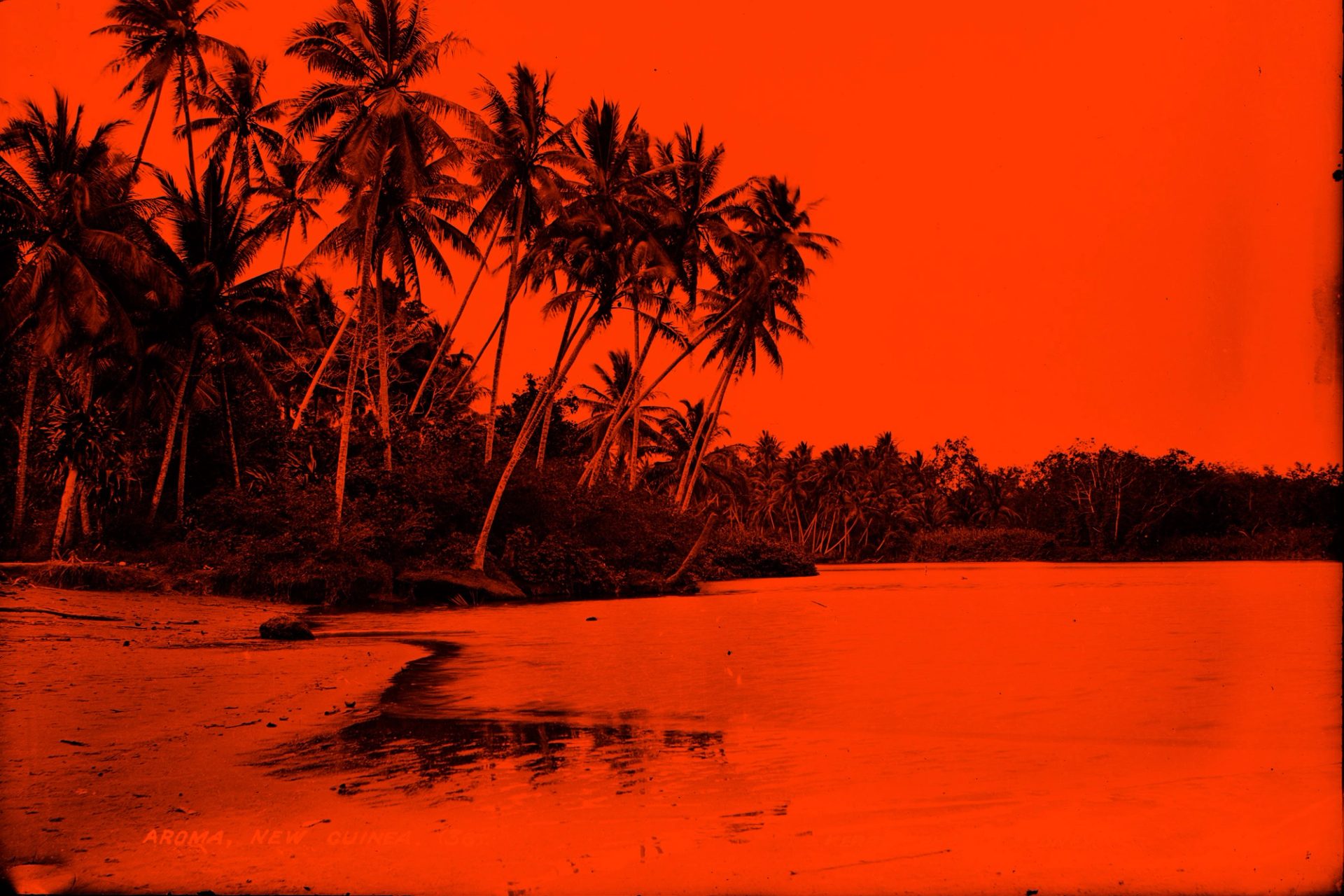Moana Rising Reflections

In the closing event of the Talanoa Forum: Moana Rising, speakers reflect on the three-day program and share their hopes for the future of Pacific inclusion in the arts and climate change action.
Listen to, or read, excerpts from Tau'ili'ili Alpha Maiava, Tiumalu Noma Sio-Faiumu, Sēini ‘SistaNative’ Taumoepeau, Professor Katerina Teaiwa and Yuki Kihara.
Tau'ili'ili Alpha Maiava
‘When you ancestralise your thinking, you can connect to anything that belongs to you without you having to learn it.’
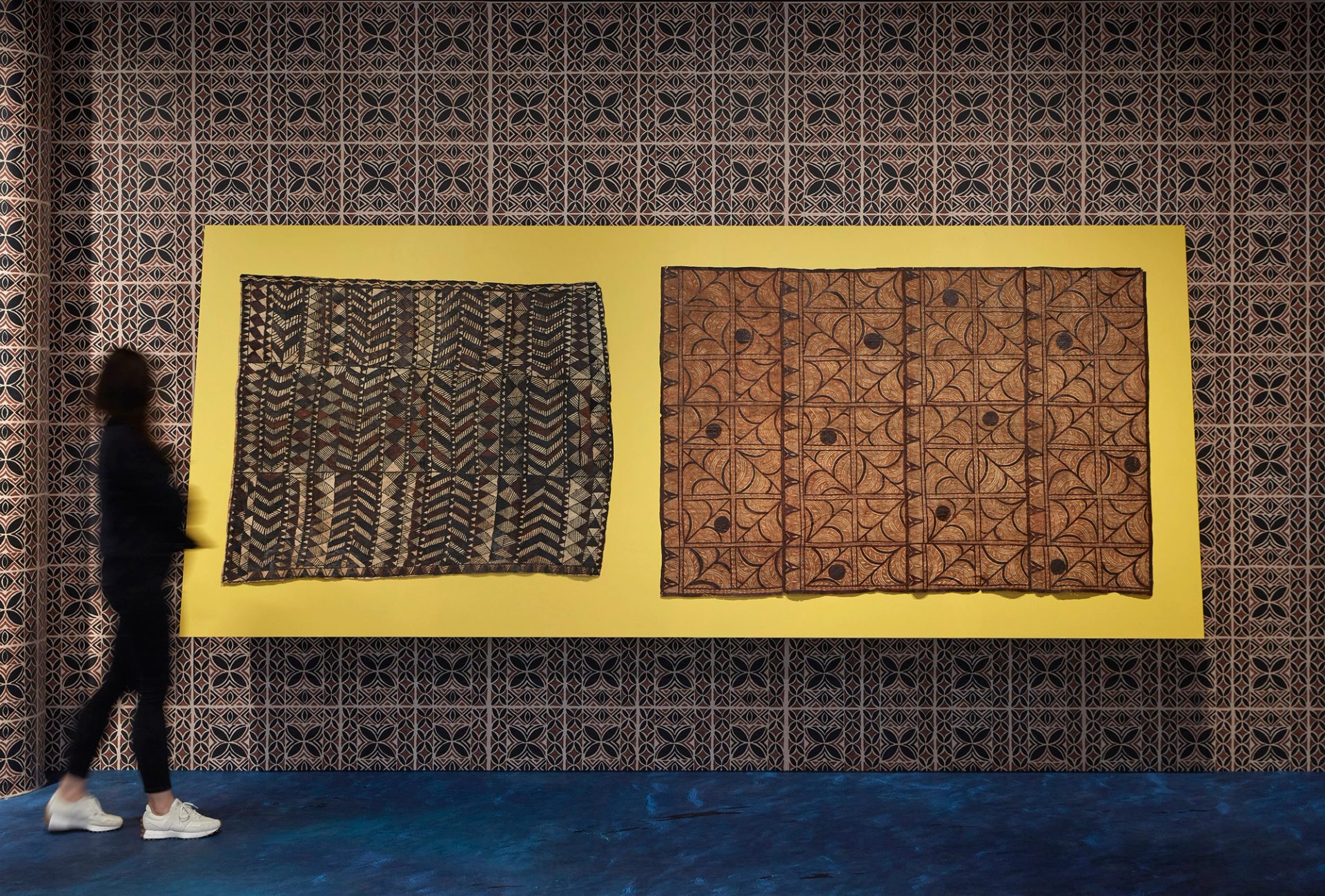
Tau'ili'ili Alpha Maiava I did enjoy the process, and I think I'd like to credit Yuki and all of the academics and Indigenous peoples that did attend to share their views. I'm at my journey now where I'm unapologetically calling on anything to do with the word ‘moana’ that you ancestralise the process. I think it's okay if we decide that today for this moana, we're going to have an 'ava ceremony because that's how our people came together. That's what they took away. Now, if we are so well represented in academia, I would like to see also an opportunity where our non-academic knowledge holders be a part of this, because we have to be fair. We are hearing learned and educated perspectives and we consider ourselves in this room open-minded people because we've learned how to navigate the world according to the palagi, but I also want to hear from the non-open-minded matua, the Elder, the pāpā and the māmā. Why do we need them? Because we need them to make sure the culture doesn't move too much away from our Hawaiki. That's what we as the sails of the boat do. We flap with the wind, but we need the waka to remain still.
I'd like to see the cultivation of our cultures into the process. I want people to come here, a lot of our Australian papalagis, who only have an islander friend but have never really experienced an 'ava, or a turou in Rarotonga or a welcome in Tahitian. I want them to be a part of this because then you do justice to the word moana. But I do understand that at some point we have to start somewhere. If we are going to call it a moana, make it as moana as possible. And if no one else understands, that's the opportunity to educate, to spread the minds of those who will now understand – and that's what these forums are for. Other than us talking about how we can move forward, it's also the opportunity to bring those who have always been looking from the outside to we, the people and culture inside the glass. Now it's time to make them touch and feel tangibly that these are living cultures. They're not dying. We didn't lose our art.
Now you see the Sāmoans regifting the art of tātatau to Tonga. Now the Tongans are sharing with me, a Sāmoan, the art of fangufangu. Now we're seeing some of our karakia from Māori. We're learning it as Sāmoans. We call it ‘mua’, but we don't have much. But we're going to the Māori and say, ‘Hey, what do you care about? It sounds familiar to me, even though I can't speak it.’ Why is that? When you ancestralise your thinking, you can connect to anything that belongs to you without you having to learn it. So, my reflection is I'd like to see a combination of what we now represent in academia, the learnt art, but also an opportunity for our Elders who are artists themselves in the traditional art of kōrero, talanoa, the art of making things that don't usually get a space to share in these conversations. Because to me, this is a palagi medium of sitting down and talking about ideas. We also do it in our cultures. We call it talanoa, kōrero, in Sāmoa we call it soalaupule. It's a word made out of three: ‘soa’ means ‘one’ or ‘two’, ‘lau’ means ‘yours’ or ‘mine’, and ‘pule’ means ‘authority’. And the only way we move forward after making a decision is after I've considered yours, you have considered mine and we have agreed that we may not take all of mine, but a compromised version of it will be our way forward. And so, I want to keep this an alive experience by bringing in some of our Elders.
Professor Katerina Teaiwa
‘You've got to do what you need to do to think about your own wellbeing, your own nourishing, your own sustenance. And then once you're standing on good, solid, powerful ground ... bring everybody into that space and take them with you on that journey.’
Professor Katerina Teaiwa It has been a very interesting experience being someone from Fiji who is also Micronesian in this Polynesian space in the last few days. Usually when I think of those sorts of spaces and I think about Sāmoan centred spaces as someone who comes from an extreme minority in the Pacific, there's always a feeling of anxiety and trepidation as well, because as much as people throughout the week have talked about feeling othered most people who are from the minority, within the minority, within the minority kind of experience that othering even in a larger, more hyper scale. And anyone who is from the Pacific knows how a lot of things pivot around Tonga, Sāmoa and Fiji, for example. So, I came in thinking about all of those different dimensions and complexities within the Pacific, and the inequalities and the hierarchies of representation and opportunities to represent yourself in all kinds of spaces, including an amazing space like this.
But I think what I discovered and reflected on along the way took me beyond that kind of thinking where, oh my gosh, you know, we're the extra other amongst the others because what Yuki and Paradise Camp have actually done is, for me, demonstrate a kind of method that actually is this sort of ancestralised thinking, which is so powerful that it actually moves beyond some of those borders and boundaries actually set up by the west in the Pacific, which is Melanesia, Micronesia and Polynesia. Those aren't our concepts. Those aren't our words. Those are ways of imagining Oceania that were introduced and put on us by Europeans and then became really crystallised and solidified in our thinking about ourselves. So, what was so powerful about this week, I think, is very much that Yuki's method, which is something that she's been building very carefully and trialling and practicing and figuring out in many spaces over the years, is this movement back and forth between what an individual can do and then what is so powerful and possible? When you're in a network and you're collaborating, when you bring your whole tribe into that space, that's a very powerful way of working, especially within a capitalist, extractivist competitive system, and something that I think many of us, whether we're in academia, whether we're in fashion, whether we're in a commercial space, a method that is actually necessary for preserving and safeguarding our own humanity and our ancestralised collectivist mode of thinking and working. You've got to do what you need to do to think about your own wellbeing, your own nourishing, your own sustenance. And then once you're standing on good, solid, powerful ground where you feel connected to all those other realms, then bring everybody into that space and take them with you on that journey.
And I felt very much that way in this space. We actually know what we're doing. This ancestralised thinking is actually operationalised already in so many different ways. And the exciting part is to see that everybody's doing it in their own little corners of the Pacific, the moana, Oceania. That's what's so exciting because I always thought I was doing it by myself. But this idea of actually opening yourself up to hearing what the ancestors are saying and what they hope, and they dream, and they vision for us is probably the central method of what we do. It is actually the source. And that's why, whether you're talking about archives or vārchives or atlases or whatever words that there might be in English, it's not actually the point of it all. We're trying to repair; we're trying to restore. We are constantly resisting and reflecting, but we're trying to rebuild lots and lots of different things that have been destroyed and torn apart and dismantled and displaced by a lot of different powerful structural systems. That is actually the goal. And that is the biggest thing that we have to think about in this condition of climate crisis that we're in. At the end of the day, you've got to heal and repair and restore everything. So, the question is: how do we do it together, collectively, generously in kinship and solidarity?
Tiumalu Noma Sio-Faiumu
‘We have to recognise when we're being impacted by some traumatic frequencies of the challenges of bringing together Western and Pacific systems.’
Tiumalu Noma Sio-Faiumu In reflection, there is so much decolonisation work that still needs to continue, and I really congratulate the efforts of so many people in these spaces. Hearing the team this morning talk about what they're doing, hearing everyone on this panel, all those words. But I think a big part of that, too, for me in reflection – and this is just my personal opinion – to an extent now we have to recognise the collective trauma that we've all inherited as Pacific people, and the decolonisation should really start inside of us as well. And we have to recognise when we're being impacted by some traumatic frequencies of the challenges of bringing together Western and Pacific systems. And I feel like a big part of how we can overcome that is really in our access to our language and our culture, because we often just see the fruits of our Pacificness and the fruits of the tree being our siapo patterns, our tatau patterns, our measina. But all of that is very connected to the root and the trunk system that informs and grows all of that fruit. They're not separate parts, those keys of access for our young ones, especially, who are creating art and helping to transform and elevate messages that are really important for climate change and other matters still around decolonisation. It's important for us to understand and lean into that imperfectly and perfectly not.
I have an 85-year-old father who is somebody who is my greatest advisor. I'm not perfect in my Sāmoaness – it's a journey – but we have to feel confident that our Elders are taking us to a certain level in our migration story, and now they're leaving it up to us to actually clear that pathway and to make it a safer space for people who speak the language or not, to lean into the heart of who they are as an Indigenous person, representing the fruits and the culture and the language. But to deepen those learnings, I think it is really important to access our culture and our language and showcase that all in terms of the systems. It doesn't matter what we create, it's become really obvious to me.
Yuki coining the phrase ‘vārchive’ and I'm going ‘vā’, as a Pacific word, is now sitting in a museum alongside a colonial term. How is that ‘vā’, that word – a Pacific word – going to be protected in later years when we are no longer here in this system? How will it be utilised? How will it be transformed into something else that will lose the origins of its actual meaning? Because these are words, these are terms. But for Pacific people, these are more than words. These are ways of life and ways of being that we've carried with us and don't actually all belong to us.
In closing, I just thought it was really important for us to reach back to our past and find words and ways forward that we can help our younger people to navigate. I'm going to be 57 soon. I'm sure most of us are kind of in that age group, and for me, I would just love to see our younger ones just walk with confidence about who they are in their body and their mind and their spirit and help put that through to the arts.
Sēini ‘SistaNative’ Taumoepeau
‘... art and culture is such an amazing, porous container that we can all drink from or expand with. And I think that Paradise Camp has been an incredible, incredible example of that...’
Sēini ‘SistaNative’ Taumoepeau [Sings in language]
That song usually is in three different languages. It was written in a three-way school. We were reflecting on photographs of the kids' ancestors. Usually when we're writing song, there's at least four generations inside the space, sometimes outside. Sometimes it’s a school. Doing all of that work, something that I didn't realise until I was here these past three days was that as a Tongan woman, I've been traveling all around this country learning how to revive and revitalise culture from the Indigenous people of this country because they do it really well. And I wanted to say that I didn't realise that these communities will have lots and lots of Pacific people and Tongan people in particular, interrelating and growing inside those communities.
But something I'm really happy to say is that I helped the songs for future generations of mixed race Tongan Aboriginal people, Pacific Aboriginal people in these lands, and that sometimes when you're making as an artist, you don't know what the results will be. And I feel that especially with the people who are from the cultural space that is City of Sydney here today and these past three days, we're really going to be busy brainstorming and working that out. All of the many ways that was able to be expressed in these three days, that art and culture is such an amazing, porous container that we can all drink from or expand with. And I think that Paradise Camp has been an incredible, incredible example of that, and also how important that queering and intersectionality is to that, and also to encourage everybody to continue a regenerative work. And thank you, Yuki, for your regenerative work. Malo.
Yuki Kihara
‘My heart and my mind are very full and very, very grateful for everybody who participated over the last three days.’
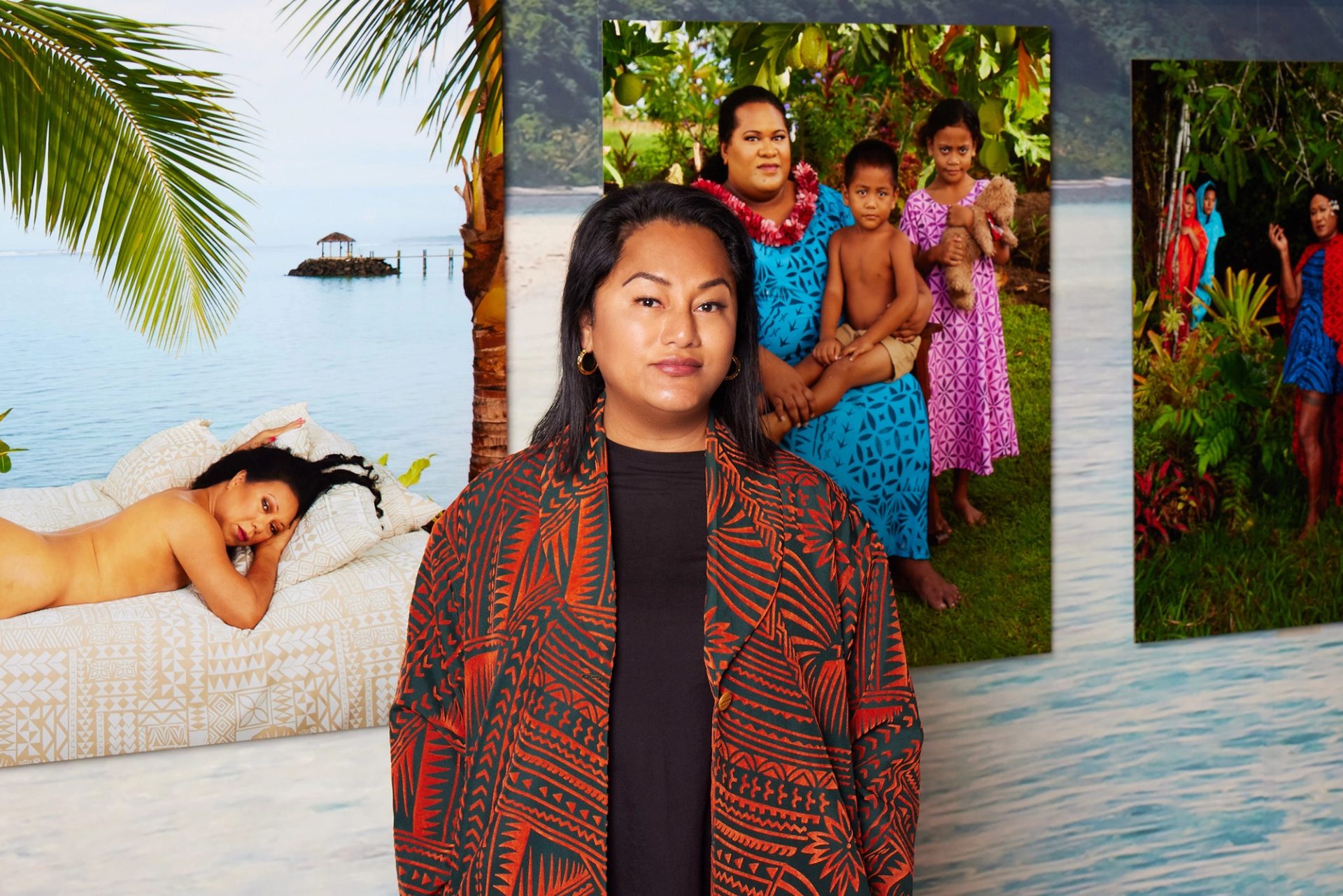
Yuki Kihara My heart and my mind are very full and very, very grateful for everybody who participated over the last three days. You were all brought together because I'm inspired by the work that you do. I am now going to present to you moving forward the touring of Paradise Camp. Over the last six or seven months, I've been working on the touring of Paradise Camp back to Sāmoa. Paradise Camp will open in Upolu Island at the Saletoga Sands Resort, opening on the 1st of June and closing on the 31st of October. I deliberately programmed the opening of Paradise Camp on the 1st of June, so that it coincides with our 63rd anniversary of independence. And then Cindy of Sāmoa will be singing the Sāmoan national anthem at the opening. And then so why Saletoga Sands Resort? When Natalie and I were appointed by the Government of New Zealand to represent Aotearoa New Zealand at the Venice Biennale, that was in September of 2019, and then we were able to commence the production, the photoshoot production of Paradise Camp in March of 2020, and it involved over close to over 100 people to make the photo shoot happen that you see in the exhibition.
When I did my location scouting everywhere, I was like, okay, let's take the photo shoot outdoors to highlight the beauty of the island that's also very fragile at the same time that's impacted by global warming, climate change and typhoon and tsunami and so on and so forth. So, when I was looking for a place to host 100 people of cast and crew, the only place that I could host them was at a resort called the Saletoga Sands Resort. I basically partnered with the resort, to use their conference room for a week to have back-to-back vans picking up people from Apia, picking them up everywhere around Aleipata to bring them to the production house, makeup and hair. I had drivers going, people looking after logistics, so on and so forth. It was like a military operation. It was utilising the film production methodology to make it all happen. So that's why I'm taking it to Saletoga Sands Resort because we also use the resort as the production house. But at the same time, the idea of resort is also a constructed notion of paradise, right? Before it was a resort it was dense bush with volcanic stones everywhere. The resort owners came and they transformed it into a very luxurious experience. So, in a way, taking Paradise Camp to this constructed environment of paradise is also something I'm also critiquing as well. So, the Saletoga Sands Resort was one of five locations in and around the Aleipata district where the Paradise Camp photographs were taken. So, I want to install the actual photographs to the actual locations of where the photographs took place. The idea is that once you arrive at the resort, you get an aerial map, and then you go out into a treasure hunt to find where these artworks are. And then there will be a small group of people from the resort who'll be trained as docents to give the tour of the exhibition that are going to be scattered all around the resort.
Speakers
Yuki Kihara is an interdisciplinary artist of Japanese and Sāmoan descent renowned for delving into the complexities of postcolonial histories in the Pacific and interrogating colonial legacies and Western misinterpretations from the perspective of the Fa'afafine (third gender) community, to which she belongs. Kihara’s Paradise Camp garnered international acclaim when it debuted at the 2022 Aotearoa New Zealand pavilion at the 59th la Biennale di Venezia and is currently in its second iteration at Powerhouse in Sydney, Australia.
Tau'ili'ili Alpha Maiava is a music composer, vocalist and content creator of Sāmoan-Niuean heritage whose work has an emphasis on Tagata Moana cultural revival and preservation. Tau'ili'ili co-produced and hosted the Sounds of the Moana podcast series which won Gold at the New York Festivals Radio Awards. Much of his work concentrates on building mechanisms to protect and advocate for Moana Pasifika composers through copyrights protection and language empowerment through sounds, including those in the disability space. Tau'ili'ili is currently filming a documentary series on endangered Pacific musical practices. Tau'ili'ili was a member of the Mt. Vaea Band when it won Best Polynesian Album at the Hawai'i Music Awards 2005 and had four tracks featured on the Sione’s Wedding soundtrack.
Sēini 'SistaNative' Taumoepeau is an Orator and Songwoman of Tongan heritage whose career spans over 30 years as performance artist, presenter/broadcaster and creative industries professional. Sēini extends the narratives of Indigenous Oceania in the arts, media, culture, education and personal development sectors. Her storytelling praxis occupies the outskirts, fringe or margins – exploring connectivity, hōhoko (genealogy), ritual, ceremony, communication, relational intersectionality and displacement across Tā Vā (time–space) reality. Emerging Elder and lifelong scholar, Sēini brings Oceanic wisdom and Indigenous science to the forefront, as an extension of the emergent Indigenous cultures of her people of the Mōana.
Professor Katerina Teaiwa SFHEA is an award-winning artist, academic and teacher of Banaban, I-Kiribati and African American heritage, born and raised in Fiji. She is professor of Pacific Studies at Australian National University (ANU) where she founded and convened their first Pacific Studies teaching program. Katerina's commentary on Pacific issues has been published in various news publications and she has consulted with the Secretariat of the Pacific Community, UNESCO and DFAT on cultural policy and sustainable development. Katerina was a founding member of Oceania Dance Theatre at the University of the South Pacific and she’s a practising visual artist. In 2022 she won two national teaching excellence awards from Universities Australia including the overall Australian University Teacher of the Year 2021.
Tiumalu Noma Sio-Faiumu is a creative connector of Pacific descent working in the arts cross-culturally and across the social spectrum producing and creating multidisciplinary art projects, both independently and for leading arts organisations. She believes in, and has experienced, how the arts can empower, change and elevate individuals and communities. Noma is managing director of music company, 37 Hz and executive producer of the SOUNZ podcast series Sounds of the Moana, which won Gold (the highest category award) at the prestigious New York Festivals Radio Awards.
About
First presented at the 59th Venice Biennale, the Talanoa Forum extends the themes of the Paradise Camp exhibition by bringing together 24 artists, curators, scholars, activists and policymakers from Australia, Aotearoa New Zealand, Sāmoa, Tahiti and Italy. This 3-day interdisciplinary program highlighted urgent issues including small island ecologies, climate justice, decolonial museology, diasporic and Pacific alliances. The Forum’s artistic director is Yuki Kihara, creator of Paradise Camp.










